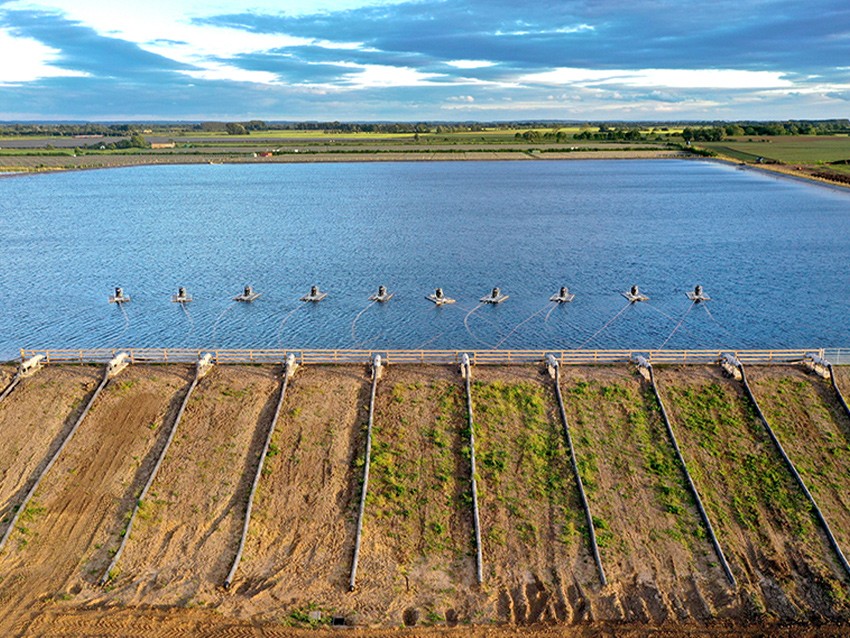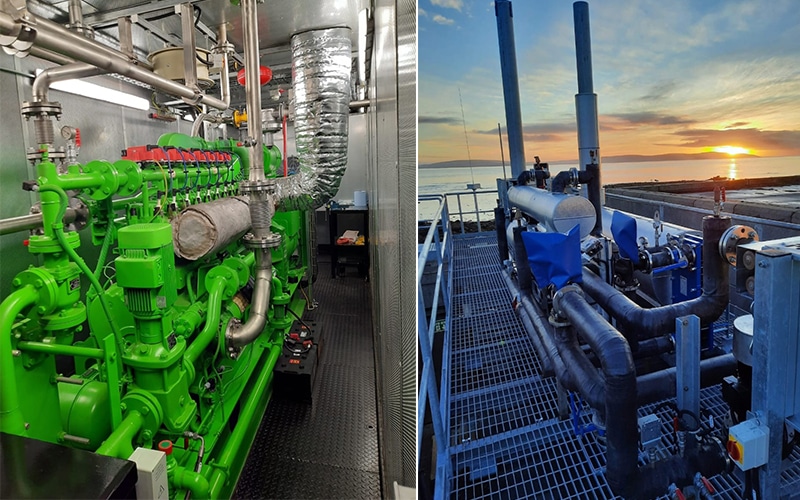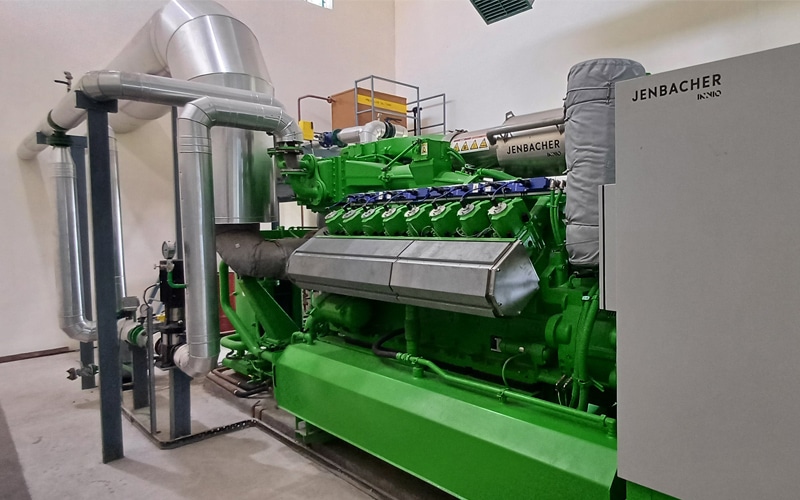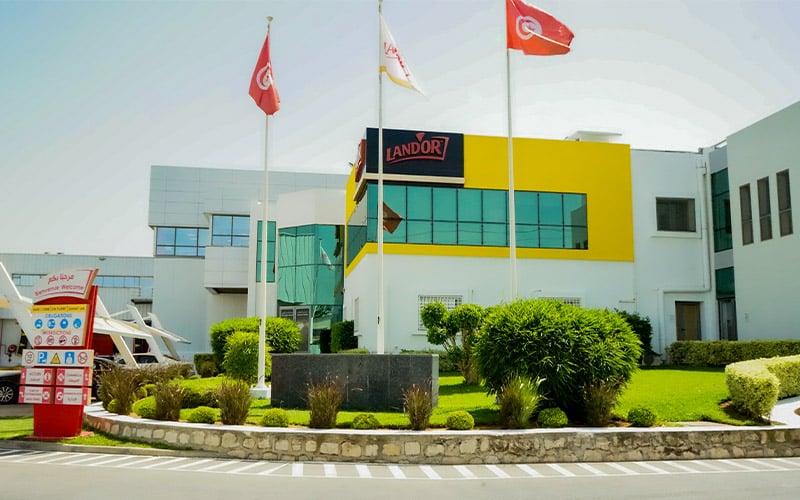The horticulture sector is uniquely positioned to benefit from advanced energy solutions, transforming energy expenditure into an opportunity for sustainability and efficiency. In this article, we explore innovative strategies that greenhouse (also called „glasshouses”) growers can adopt, focusing on natural gas-fuelled Combined Heat and Power (CHP) systems, the integration of heat pumps, and the potential of microgrids to create a resilient and green energy ecosystem.

- Natural Gas-Fuelled CHP Systems: A Dual Benefit Approach
Natural gas-fuelled CHP systems are a cornerstone of modern greenhouse energy solutions, providing both electrical and thermal energy from a single fuel source. This dual-output approach significantly enhances energy efficiency compared to conventional methods where heat and power are produced separately.
Enhancing Air Quality and Plant Growth:
- Catalytic Exhaust Gas Cleaning: To further enhance the sustainability of CHP systems, incorporating catalysts to clean the engine’s exhaust gas is pivotal. This technology not only reduces harmful emissions but also enables the enrichment of greenhouse air with CO2, a byproduct of natural gas combustion. This CO2 enrichment is beneficial for plant growth, creating a symbiotic relationship between energy generation and horticulture productivity.
Case study 1: APS Salads Greenhouse
P3P Partners is one of the UK’s leading suppliers of combined heat and power (CHP) energy solutions. The company operates bespoke energy centres across the country, helping organisations cut their energy costs, whilst creating a sustainable environment.
Back in 2013, P3P Partners chose Clarke Energy to engineer, install and maintain a 3.3MW 620 Jenbacher gas engine along with balance of plant for their customer, APS Salads, Alderley Edge, Manchester. APS Salads is one of the UK’s largest growers of tomatoes and requires CO2 recovery, to assist the growing process within their greenhouses.
The partnership between P3P, Clarke Energy and APS Salads ensured the best solution possible was achieved, allowing for heat and CO2 to be available as and when needed.
„Clarke Energy’s response time and customer service has enabled us to be very flexible and upfront with APS, about how we can provide them with both the CO2 and the heat when they need it. We have an excellent relationship with both APS Salads and Clarke Energy, ensuring the best reliability and availability throughout the year. We are proud to be a partner of Clarke Energy and look forward to growing our relationship over the years”
Philip Elborn, Project Engineer, P3P
Watch Philip Elborn from APS discuss this project here.
- Hybridising Gas-Fuelled CHP with Heat Pumps: Maximising Renewable Thermal Energy
The integration of heat pumps with CHP systems represents a cutting-edge approach to maximising energy efficiency and sustainability. Heat pumps can extract renewable thermal energy from the surrounding environment, reducing the overall fossil fuel consumption of the greenhouse. CHP systems generate electricity and heat typically from a gaseous fuel source. One unit of electrical energy can be input to the heat pump to generate 4-5 units of heating. CHPs can provide an additional source of thermal energy during peak demand or when temperatures are too low to operate efficiently. Both heat pumps and CHPs can buffer thermal energy in hot water storage tanks.
Greenhouse gas emissions are reduced in different ways. If the power from the CHP is driven by natural gas, one unit of fossil-based electrical input will drive 4-5 units of renewable heat. If the CHP is converted to operate on biomethane or hydrogen the system is entirely renewable.
If the CO2 from the engine exhaust is used for growing air enrichment it will be partially locked up in the plant matter and will reduce immediate local emissions.
Case study 2: AGR 217,000m² Glasshouse and Energy Centre with 33MWth Heat Pump System and 9MW Combined Heat and Power Plant
AGR is a leading renewable energy company specialising in low carbon energy generation, with over £350m of projects delivered to date in the UK, including a portfolio of gas peaking and combined heat and power (CHP) projects. AGR developed and is the main EPC contractor for a new 217,000m² glasshouse and energy centre in Cambridgeshire and has sold the project to funds managed by Greencoat Capital. AGR has selected Clarke Energy to supply and install the innovative energy centre that will supply electricity and heat to the project. Overall, the glasshouse facility will be used to grow cucumbers and will be able to grow 10% of the cucumbers consumed in Britain using 30% less CO2 than conventionally heated glasshouses.

The Energy Centre for the glasshouse combines a 33MWth heat pump system with a combined heat and power (CHP) plant comprising three high-efficiency INNIO Jenbacher gas engines with CO2 recovery. The installation of heat pumps will provide renewable hot water heating to the glasshouse and will qualify for the Renewable Heat Incentive (RHI). IES Energy are leading heat pump manufacturers and will be supplying and installing the heat pumps for the project. Their trusted partner Pure Renewables will be designing and installing the open-loop collection system which will run over a total distance of 750m. Clarke Energy and AGR opted for an ammonia (R717) refrigerant system as opposed to a hydrocarbon refrigerant from IES Energy as ammonia has a higher efficiency value and global warming potential of zero.
- The Potential for Greenhouses in the energy transition: Grid support and electricity balancing
Power generation capacity offers growers the potential for additional revenue streams.
Greenhouses typically have most requirement for heating and potentially CO2 recovery. Electrical energy may be used to support lighting, however in the case of a CHP-based greenhouse solution, there is typically only 1,500 hours per year running requirement. Surplus electrical energy is available to be sold to the grid. Additional capacity of the engines, when not operating, can be monetised by providing grid support services, creating a new revenue stream for growers from electrical power sales.
Conclusion:
Adopting advanced energy solutions like natural gas-fuelled CHP systems with catalytic exhaust cleaning, hybridising with heat pumps, and leveraging the potential of energy trading represents a forward-thinking approach for greenhouse growers. These strategies not only align with global sustainability goals but also offer tangible benefits in terms of cost savings, operational efficiency, and enhanced crop production. As the sector evolves, embracing these technologies will be key to thriving in an increasingly eco-conscious marketplace.
Greenhouse operators are encouraged to explore these energy solutions, engage with energy experts, and consider the long-term benefits of investing in sustainable and efficient energy systems. By doing so, they can position themselves as leaders in environmental stewardship while optimising their operational efficiency and productivity. Contact Clarke Energy to learn more.




